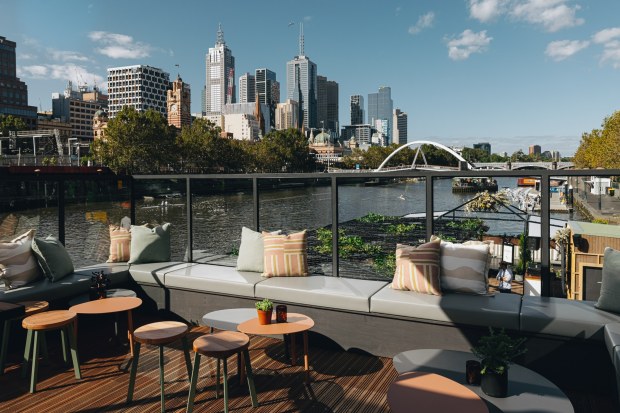Melbourne house prices to jump 12pc in 2025

Melbourne’s housing market is poised to outperform Sydney over the next two years, with prices accelerating by 12 per cent in the year to June 2025, sparked by higher demand and more constrained supply, KPMG predicts.
Sydney house price growth is also expected to gain momentum, albeit at a slower 10.3 per cent after inflation is factored in, during the same period.

Melbourne housing market is poised to outperform Sydney over the next two years, according to KPMG. Jake Roden
KPMG chief economist Brendan Rynne said increased demand and markedly lower supply would fuel those healthy gains by the end of 2025 financial year.
“Demand is likely to increase due to heavier migration, anticipated rate cuts moving into 2025 financial year and potentially relaxed lending conditions,” he said.
“High rental costs could also push renters to buy instead, along with the longer post-pandemic demand for more space as people continue to work from home.”
Demand by foreign investors is also starting to pick up again and tipped to keep rising.
The Foreign Investment Review Board half-year figures of the 2022-23 financial year was at $4.3 billion, already more than half of the total investment achieved in the 2022 financial year.
“On the supply side, housing shortage is expected to persist due to the pullback in construction activity,” Dr Rynne said.
Hobart is predicted to post a 14.2 per cent price increase during the same period, Perth is set to rise by 8.8 per cent, Canberra by 9.4 per cent and nationwide by the same amount.
Brisbane is poised to underperform, gaining just 4.2 per cent, which is the smallest increase of all capital cities, while Adelaide is forecast to rise by 6.8 per cent and Darwin by 5.1 per cent.
“Brisbane and Adelaide prices have not pulled back by the same magnitude as Sydney and Melbourne, so there’s still this level of excess between the long-term and near-term price growth,” Dr Rynne said.
“These markets need to recover back towards their long-term price trajectory because at these levels, they are relatively overvalued compared to Sydney and Melbourne.”
During the recent boom, Brisbane house prices jumped by 41.8 per cent while Adelaide surged by 44.7 per cent. Since peaking Brisbane had dropped by 11 per cent while Adelaide only declined by 2.4 per cent according to CoreLogic.
Meanwhile, units in Sydney, Melbourne and Hobart are likely to post larger gains of 8.6 per cent, 7 per cent and 10 per cent respectively, compared to the national average of 6 per cent.
In the near term, the low levels of supply would counterbalance the adverse effects of interest rates and push prices moderately higher across most capitals, Dr Rynne said.
“The imbalance between population growth and housing supply will have a greater influence on prices than the dampening effect of mortgage stress and fixed mortgage reset,” he said.
After adjusting for inflation, national house and unit prices are forecast to increase by 4.1 per cent and 2.1 per cent this calendar year respectively.
Sydney house prices are predicted to rise by 6.2 per cent this year and by roughly the same amount by December 2024.
Melbourne is predicted to rise by just 1.2 per cent this year, but will accelerate to 8.5 per cent growth by December next year.
“Melbourne is anticipated to outperform Sydney as supply in Melbourne is likely to be more constrained as seen by lower future dwelling completions,” Dr Rynne said.
Perth is forecast to rise by 8.2 per cent this year and by a similar amount by the end of 2024.
Dr Rynne said rising rental costs can play a significant role in pushing up dwelling prices, as more renters try for homeownership.
“When the cost of renting is comparable to the cost of buying a similar property, households may opt for homeownership, potentially driving up house prices,” he said.
Based on KPMG’s projections for new dwelling completions and the Treasury’s population forecasts, annual rent will rise by 5.6 per cent over the next two years, which is 2.5 per cent higher than the long-term average of 3.1 per cent.
In order for rental costs to fall back to normal levels, dwelling completions would have to be around 76 per cent higher than the current forecast, Dr Rynne said.
“Either that or population growth from migration would have to be brought down to considerably lower levels than at present – which would mean short-term costs over-riding long-term economic benefits,” he said.
The May budget forecast a net growth of around 400,000 this year and 340,000 next year through overseas migration respectively.
Introducing your Newsfeed
Follow the topics, people and companies that matter to you.
Find out moreRead More
Latest In Residential
Fetching latest articles